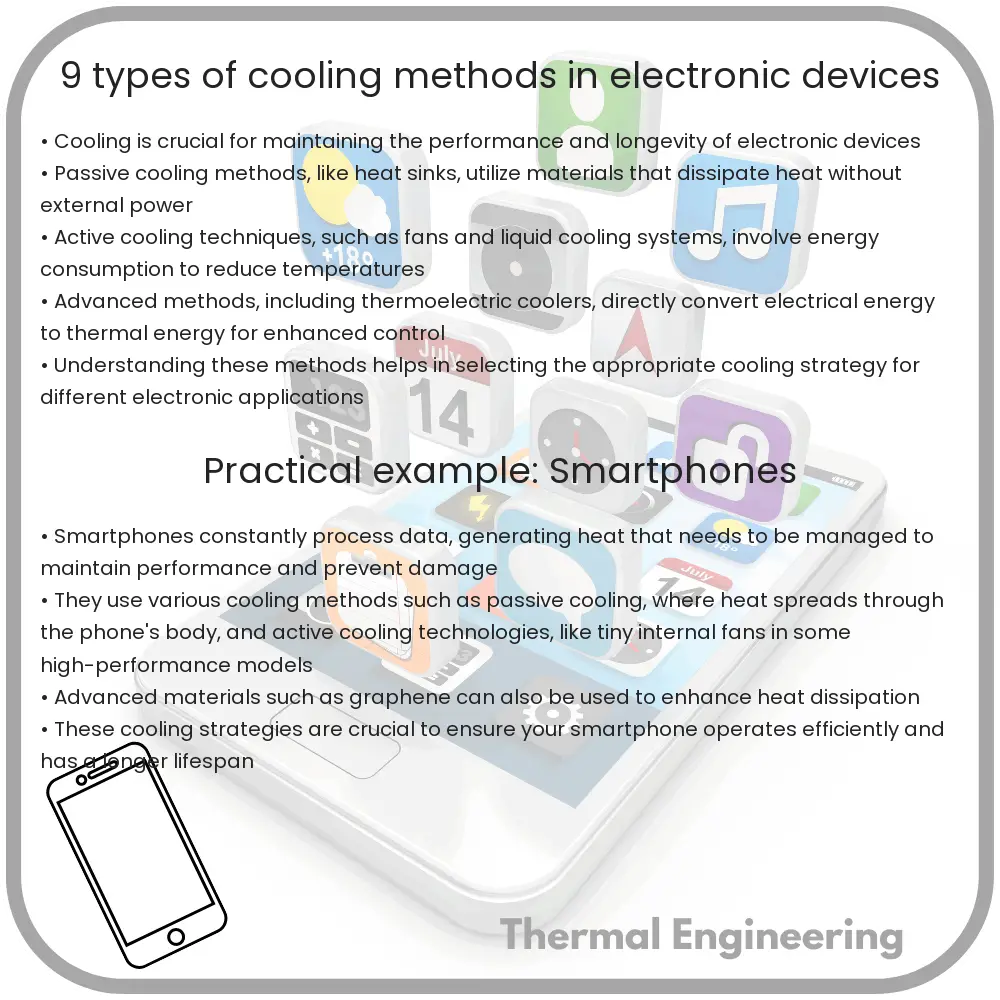Learn about nine effective cooling methods used in electronic devices to enhance performance and longevity.

Introduction to Cooling Methods in Electronic Devices
Cooling is critical in electronic devices to prevent overheating, ensure optimal performance, and prolong the lifespan of components. As devices miniaturize and their power densities increase, effective thermal management has become even more essential. The following are nine popular types of cooling methods used in the engineering of electronic devices.
1. Natural Convection Cooling
Natural convection cooling is a passive cooling method where heat is dissipated into the surrounding air without the help of fans or pumps. This method relies on the natural rise of hot air and the sinking of cooler air to create airflow. It’s commonly used in low-power applications where the heat generated is minimal.
2. Forced Convection Cooling
Forced convection cooling involves using fans or blowers to enhance the airflow rate around the components, thereby improving the heat dissipation rate. This method is suitable for moderately high power applications and is widely used in computer CPUs and graphics cards.
3. Liquid Cooling
Liquid cooling systems use a coolant liquid, which absorbs heat from the components before flowing to a radiator where it is cooled. This method is highly efficient and capable of handling high thermal loads, making it ideal for high-performance computers and gaming systems.
4. Heat Sinks
Heat sinks are perhaps the most widely used cooling technique in electronic devices. They are typically made from metals like aluminum or copper and feature fins or pins that increase the surface area to enhance heat dissipation through convection.
5. Thermoelectric Cooling (Peltier Cooling)
Peltier coolers use the Peltier effect to create a heat flux between the junction of two different types of materials. This method is best used for applications that require precise temperature control, such as in optical sensors or laser diodes.
6. Phase Change Cooling
Phase change cooling involves materials that absorb heat as they change their state from solid to liquid or from liquid to gas. This method is highly efficient and can manage the heat generated by very high power densities typical in advanced CPUs and GPUs.
7. Heat Pipes
Heat pipes are hollow pipes containing a core wick structure and a working fluid. They utilize the latent heat of vaporization to transfer heat over a large distance significantly faster than solid conduction. Heat pipes are commonly used in conjunction with other methods like heat sinks.
8. Immersion Cooling
In immersion cooling, the electronic components are directly immersed in a non-conductive liquid. Heat is removed from the components by the liquid and then cooled through a heat exchanger. This technique is used in data centers for high-density servers due to its excellent heat dissipation capabilities.
9. Spray Cooling
Spray cooling shoots a thin film of liquid coolant directly onto very hot surfaces like a CPU. The coolant evaporates instantly, taking away significant heat from the surface. This high-efficiency cooling is used in high-performance computing and intense research environments.
Conclusion
The choice of cooling method depends on various factors including the specific heat generation of the device, spatial constraints, noise considerations, and cost. Engineers must carefully design the cooling system to balance these factors while ensuring device safety and functionality. As technology advances, the efficiency and effectiveness of these cooling methods continue to improve, addressing the thermal management challenges posed by modern electronic devices.